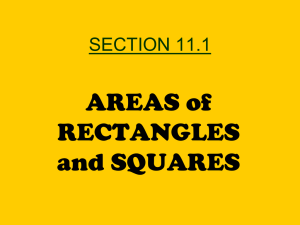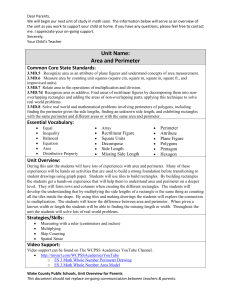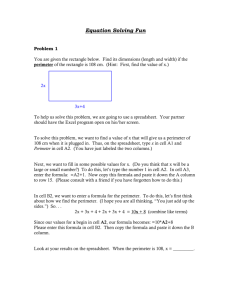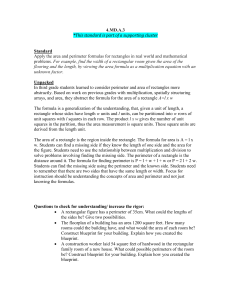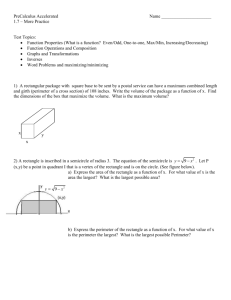Gamaliel Elementary Lesson Plan Template
advertisement
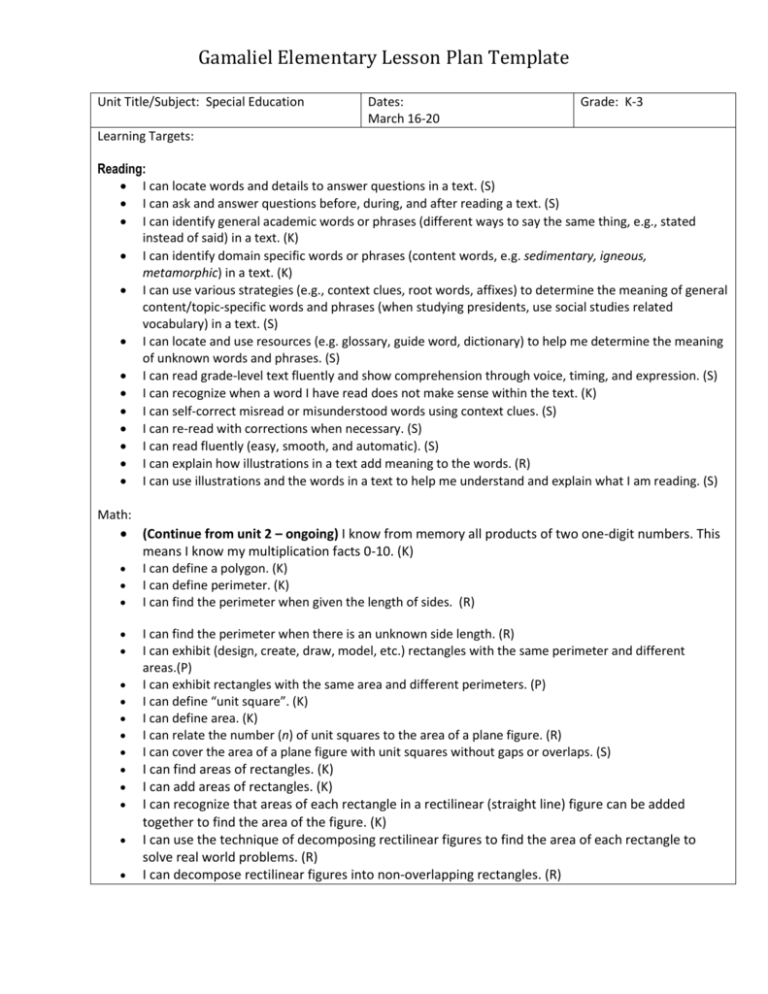
Gamaliel Elementary Lesson Plan Template Unit Title/Subject: Special Education Dates: March 16-20 Grade: K-3 Learning Targets: Reading: I can locate words and details to answer questions in a text. (S) I can ask and answer questions before, during, and after reading a text. (S) I can identify general academic words or phrases (different ways to say the same thing, e.g., stated instead of said) in a text. (K) I can identify domain specific words or phrases (content words, e.g. sedimentary, igneous, metamorphic) in a text. (K) I can use various strategies (e.g., context clues, root words, affixes) to determine the meaning of general content/topic-specific words and phrases (when studying presidents, use social studies related vocabulary) in a text. (S) I can locate and use resources (e.g. glossary, guide word, dictionary) to help me determine the meaning of unknown words and phrases. (S) I can read grade-level text fluently and show comprehension through voice, timing, and expression. (S) I can recognize when a word I have read does not make sense within the text. (K) I can self-correct misread or misunderstood words using context clues. (S) I can re-read with corrections when necessary. (S) I can read fluently (easy, smooth, and automatic). (S) I can explain how illustrations in a text add meaning to the words. (R) I can use illustrations and the words in a text to help me understand and explain what I am reading. (S) Math: (Continue from unit 2 – ongoing) I know from memory all products of two one-digit numbers. This means I know my multiplication facts 0-10. (K) I can define a polygon. (K) I can define perimeter. (K) I can find the perimeter when given the length of sides. (R) I can find the perimeter when there is an unknown side length. (R) I can exhibit (design, create, draw, model, etc.) rectangles with the same perimeter and different areas.(P) I can exhibit rectangles with the same area and different perimeters. (P) I can define “unit square”. (K) I can define area. (K) I can relate the number (n) of unit squares to the area of a plane figure. (R) I can cover the area of a plane figure with unit squares without gaps or overlaps. (S) I can find areas of rectangles. (K) I can add areas of rectangles. (K) I can recognize that areas of each rectangle in a rectilinear (straight line) figure can be added together to find the area of the figure. (K) I can use the technique of decomposing rectilinear figures to find the area of each rectangle to solve real world problems. (R) I can decompose rectilinear figures into non-overlapping rectangles. (R) Gamaliel Elementary Lesson Plan Template I can generate measurement data by measuring lengths using rulers marked with halves and fourths of an inch. (S) Day 1 Instructional Activities: Assessments (formative and/or summative): Spelling: Vowel sound as in ball spelled with augh, ough, al, and ou Differentiation – higher performing students will spell challenge words Reading: Formative: Introduce story – Pompeii… Buried Alive Vocabulary Watch video on Brainpop about volcanoes Writing activity Make predictions about story and discuss genre -nonfiction (true Flashback story) Brainpop Quiz Listen to story, discuss and find location of Pompeii, Italy on the map Online Game Discuss the time period that this story takes place Observations Define vocabulary words using glossary, guide words, etc. to help Hot Question determine the meaning Exit Slip Writing Activity/HOT Question – (Evaluation) Some of the people escaped from Pompeii while others remained in Pompeii instead of running away? What would you have done in this situation? Math: Flashback on addition, subtraction, multiplication, division, properties Review: mass, grams, kilograms, capacity, milliliter, liter, and perimeter Watch a Brainpop video to review area https://jr.brainpop.com/math/measurement/area/preview.weml Go over Lesson 23 Understanding Area and Lesson 24 Using Multiplication to Solve Area Problems in the Common Core Coach Book pages 162-171 Discuss the different strategies for finding the area of a shapecounting the squares formula for Area= length x width http://www.ixl.com/math/grade-3/area-of-figures-made-of-unitsquares play to practice finding the area of different figures. Homework Common Core Coach Area pages 172-173 Exit Slip Area HOT QUESTION-(ANALYSIS) One of the side lengths of a sandbox is 6 feet. The area of the sandbox is 36 square feet. What is the other side length of the sandbox? Explain your answer and show your work. Day 2 Instructional Activities: Academic team Regionals Assessments (formative and/or summative): Formative: Gamaliel Elementary Lesson Plan Template Day 3 Instructional Activities: Meeting at GRREC Assessments (formative and/or summative) Formative: Day 4 Instructional Activities: Assessments (formative and/or summative): Reading: Spelling Test Reading Test Pompeii…Buried Alive to test comprehension, vocabulary, Formative: Flashback and an open response Math: Online Game Observations Flashback on addition, subtraction, multiplication, division, properties Exit Slip Review: unit and perimeter Hot Question Review: mass, grams, kilograms, capacity, milliliter, liter, and perimeter Review Area-The amount of space that covers a figure. Discuss the different strategies for finding the area of a shapeSummative: counting the squares formula for Area= length x width Spelling Test Play http://www.ixl.com/math/grade-3/perimeter-find-the-missing Reading Test side-length to review perimeter (when you are given the perimeter and one of the sides is missing) Students will continue to look at different strategies to find the perimeter (addition or multiplication). They will also use subtraction when finding the missing length of a side, when the perimeter is given. Continue to discuss area using the distributive property Lesson 28 Crosswalk Coach pages 199-204 Homework Area (distributive property) pages 205-206 Crosswalk Coach Exit Slip perimeter HOT QUESTION-(ANALYSIS) Luke knows the area of a rectangle is 50 square units. The length of the rectangle is 10 units. What is the width of the rectangle? Show your work. Day 5 Instructional Activities: ARC meetings all day Assessments (formative and/or summative) Formative:
